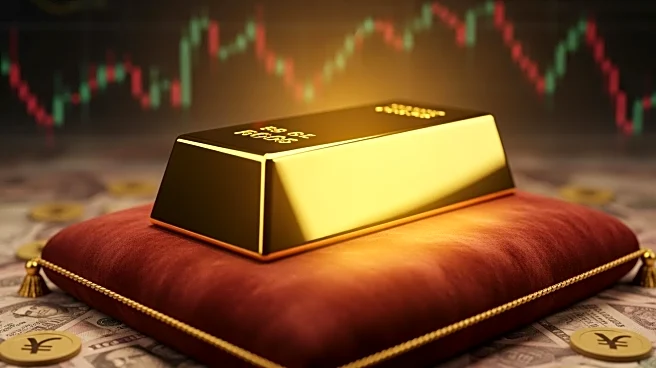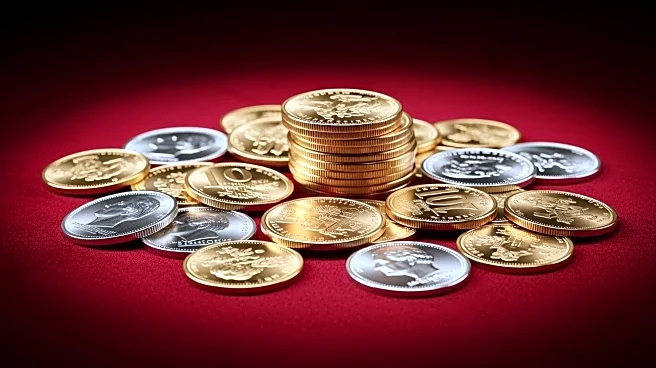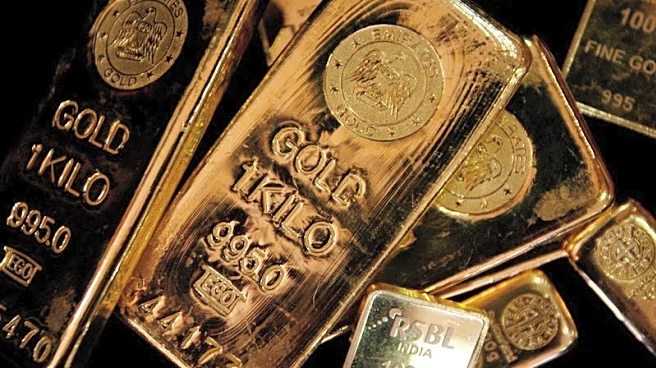What's Happening?
Gold prices have reached unprecedented levels, with analysts predicting an average price above $4,000 per ounce for 2026. This forecast comes as gold has already gained 54% this year, marking its strongest
performance since the 1979 oil crisis. The surge in gold prices is attributed to ongoing economic and geopolitical turmoil, which has enhanced the metal's appeal as a safe-haven asset. A poll of 39 analysts and traders indicates a median forecast of $3,400 per troy ounce for 2025, up from $3,220 in July, with expectations of $4,275 in 2026. The rise in gold prices is supported by central bank purchases, inflows into exchange-traded funds, and expectations of U.S. interest rate cuts.
Why It's Important?
The significant rise in gold prices reflects a broader loss of confidence in policymakers, currencies, and the financial system. As a traditional hedge against uncertainty, gold's increasing value indicates a shift in investor sentiment towards more stable assets amidst global economic instability. This trend could have substantial implications for financial markets, influencing investment strategies and central bank policies. The continued demand for gold as a core portfolio asset rather than a speculative investment suggests a long-term shift in market dynamics, potentially affecting currency valuations and international trade.
What's Next?
Analysts expect the upward trend in gold prices to continue, albeit at a moderated pace. Central banks are anticipated to maintain their gold purchases for reserve diversification, while investors are likely to continue treating gold as a fundamental asset. This sustained demand could further drive prices, impacting global financial markets and economic policies. Additionally, the forecasted increase in silver prices, driven by supply deficits and industrial demand, suggests a broader bullish outlook for precious metals.
Beyond the Headlines
The rise in gold prices highlights deeper economic concerns, including the potential for a shift away from dollar dominance and increased geopolitical tensions. As central banks diversify their reserves, the role of gold in the global financial system may become more pronounced, influencing international monetary policies. The strategic purchases by the official sector and robust investment demand underscore the evolving nature of gold as a financial asset, with implications for global economic stability.












